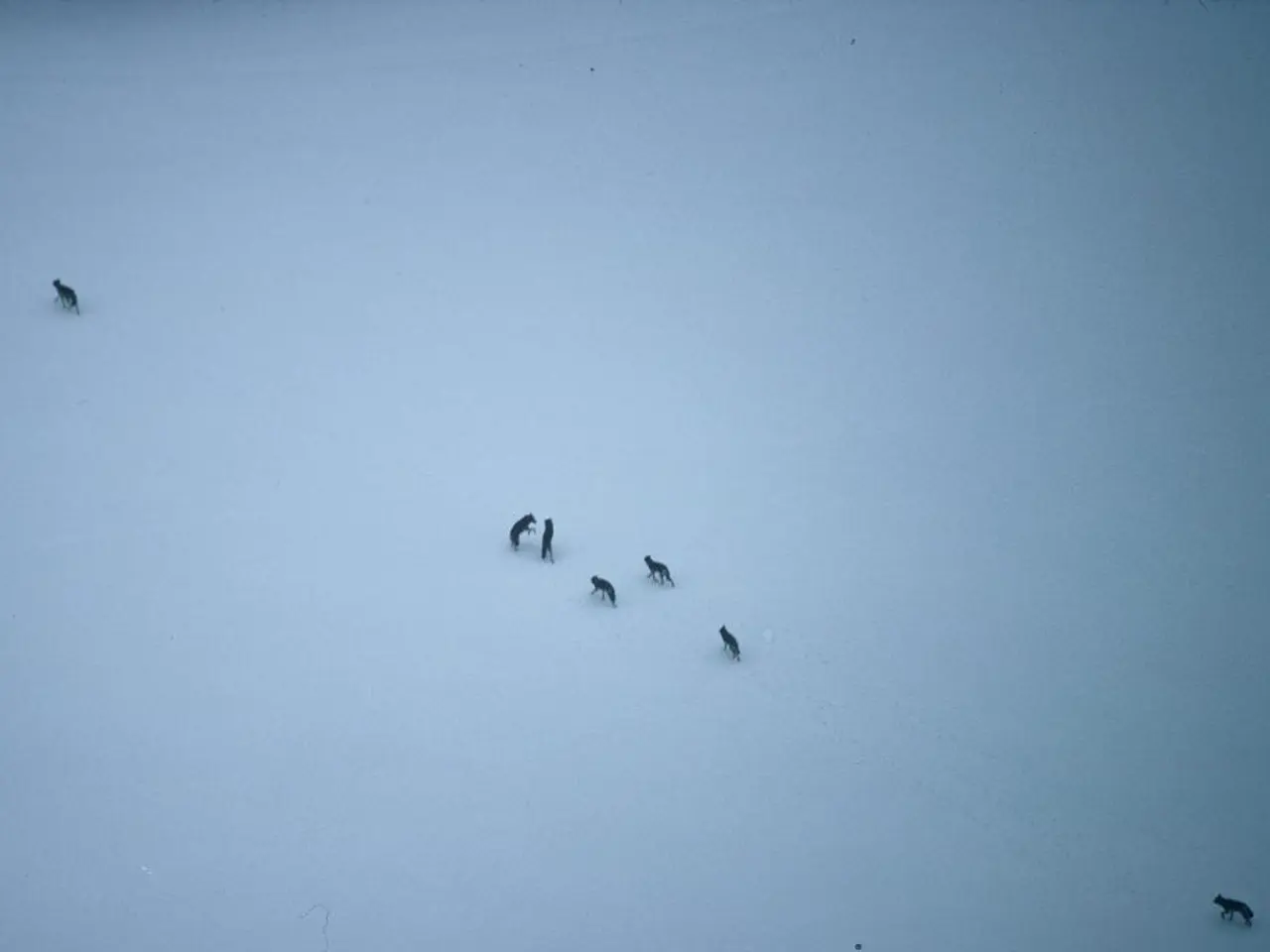Researchers Successfully Create Wolves with White Coats and Intimidating Muscular Facial Features Akin to the Extinct Dire Wolf Species
Bringing Back Extinct Species: Colossal Biosciences and the Revolutionary Approach
In a groundbreaking development, Colossal Biosciences, a pioneering biotech company, is aiming to revive extinct species using genetic engineering and CRISPR technology. Here's a look at their innovative process:
Steps to Revive Lost Species
- DNA Sequencing: Colossal Biosciences begins by sequencing the ancient DNA of extinct species, such as the dire wolf. This involves analyzing DNA extracted from fossil specimens.
- Finding a Close Living Relative: The company identifies a closely related living species to serve as a genetic template and potential surrogate. For the dire wolf, this is the gray wolf.
- Genome Editing: Using CRISPR technology, scientists edit the genome of cells from the living relative to match key features of the extinct species. This involves rewriting the genome to include the lost genes of the dire wolf.
- Cloning and Embryonic Development: The edited nucleus is inserted into an egg cell (ovum) from a domestic dog, which has had its nucleus removed. This egg is then allowed to develop into an embryo in the lab.
- Surrogacy: The embryo is implanted into the womb of a surrogate domestic dog, which carries the genetically modified pup to term.
However, the process becomes more complex when dealing with birds, such as the giant moa. Colossal plans to use emus or tinamous as surrogates by modifying their primordial germ cells to produce moa offspring.
Challenges with Birds
The external incubation of eggs in birds poses unique challenges. Colossal's solution involves introducing edited cells into a tinamou or emu embryo, which will then grow into a bird capable of producing moa eggs or sperm.
Colossal Biosciences is at the forefront of using CRISPR for species restoration, offering a powerful tool for modifying genomes to bring back extinct features in living relatives. This approach is part of a broader effort to explore genetic engineering in conservation biology.
The company has already made strides in this field, having cloned four red wolves using blood drawn from wild wolves of the critically endangered red wolf population in the southeastern U.S. The cloned red wolves are intended to be used in breeding programs to help save the species, not to release them into the wild.
The genetically engineered wolves, resembling extinct dire wolves, are currently housed in a secure location in the U.S. However, it's important to note that this is not a full revival of extinct species, as stated by Vincent Lynch, a biologist at the University at Buffalo.
The genetic engineering process involves taking blood cells from a living gray wolf and modifying them in 20 different sites. The technology used by Colossal Biosciences is less invasive than other techniques to clone animals.
The aim is to bring more genetic diversity into the small population of captive red wolves, which scientists are using to breed and help save the species. The wolf pups, aged between three to six months, have long white hair, muscular jaws, and weigh around 80 pounds, with a target maturity weight of 140 pounds.
Colossal CEO Ben Lamm met with officials from the U.S. Interior Department in late March about the project. While this latest effort does not mean dire wolves will return to North American grasslands anytime soon, it marks a thrilling new era of scientific wonder, as stated by Interior Secretary Doug Burgum.
[1] Source: https://www.nature.com/articles/d41586-022-01414-8 [2] Source: https://www.nature.com/articles/d41586-022-01228-6 [3] Source: https://www.nature.com/articles/d41586-022-01343-1
- The revolutionary approach of Colossal Biosciences, seen in their aim to revive extinct species, could also potentially be applied to other fields, such as business, education, media, technology, health, and health-and-wellness, for instance, using CRISPR technology to eradicate genetic conditions or improve wellness.
- In the realm of science and education, the results of Colossal Biosciences' research could lead to a better understanding of genetic engineering and its potential applications, fostering further innovation and advancements.
- The media could play a significant role in disseminating information about Colossal Biosciences' groundbreaking work, influencing public perceptions about genetic engineering, and sparking discussions about the ethics and benefits of reviving extinct species.
- The medical field might benefit from Colossal Biosciences' techniques, as they could potentially be used to develop treatments for various medical conditions, with the potential to save lives and improve overall health and wellness.



